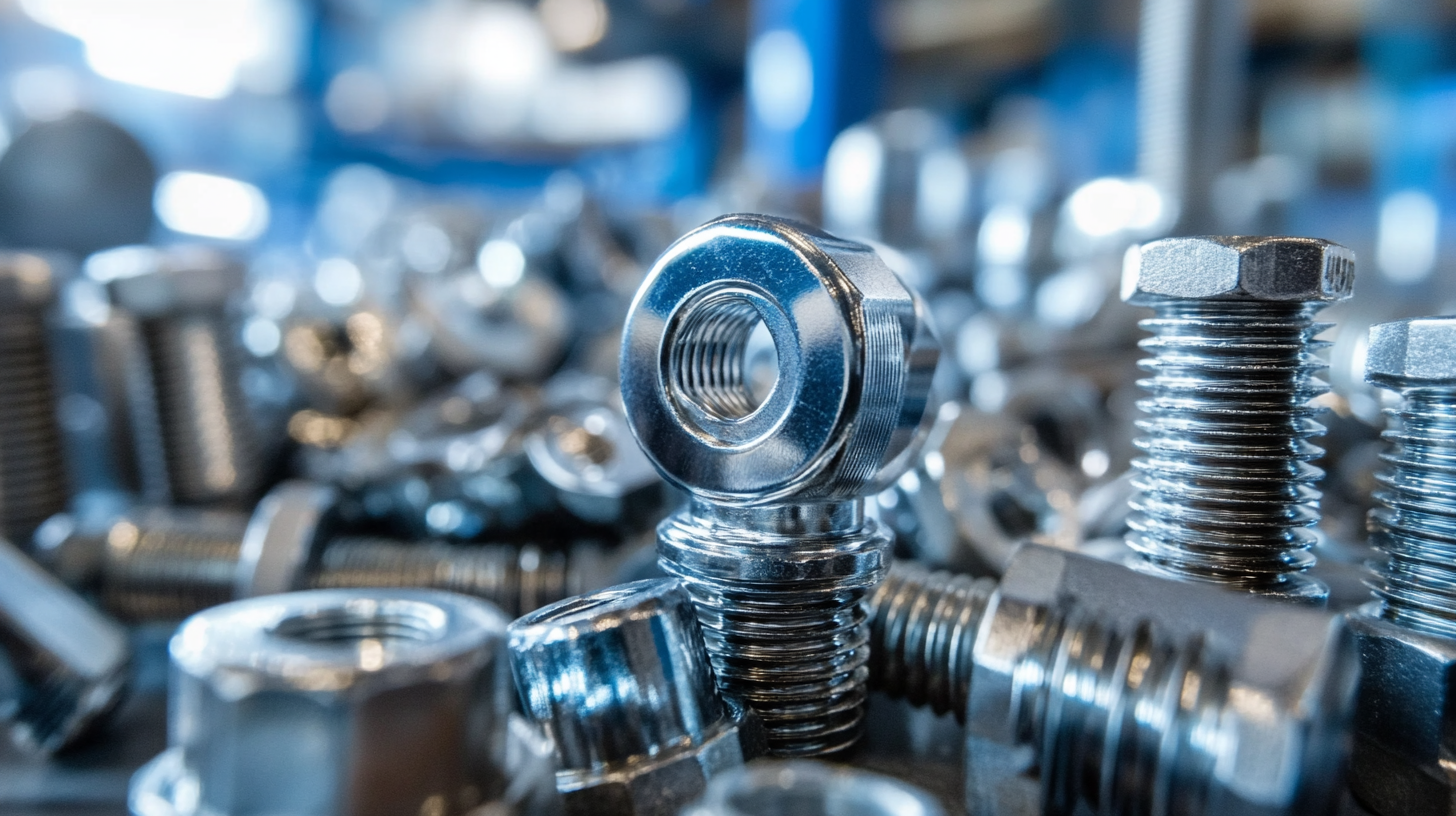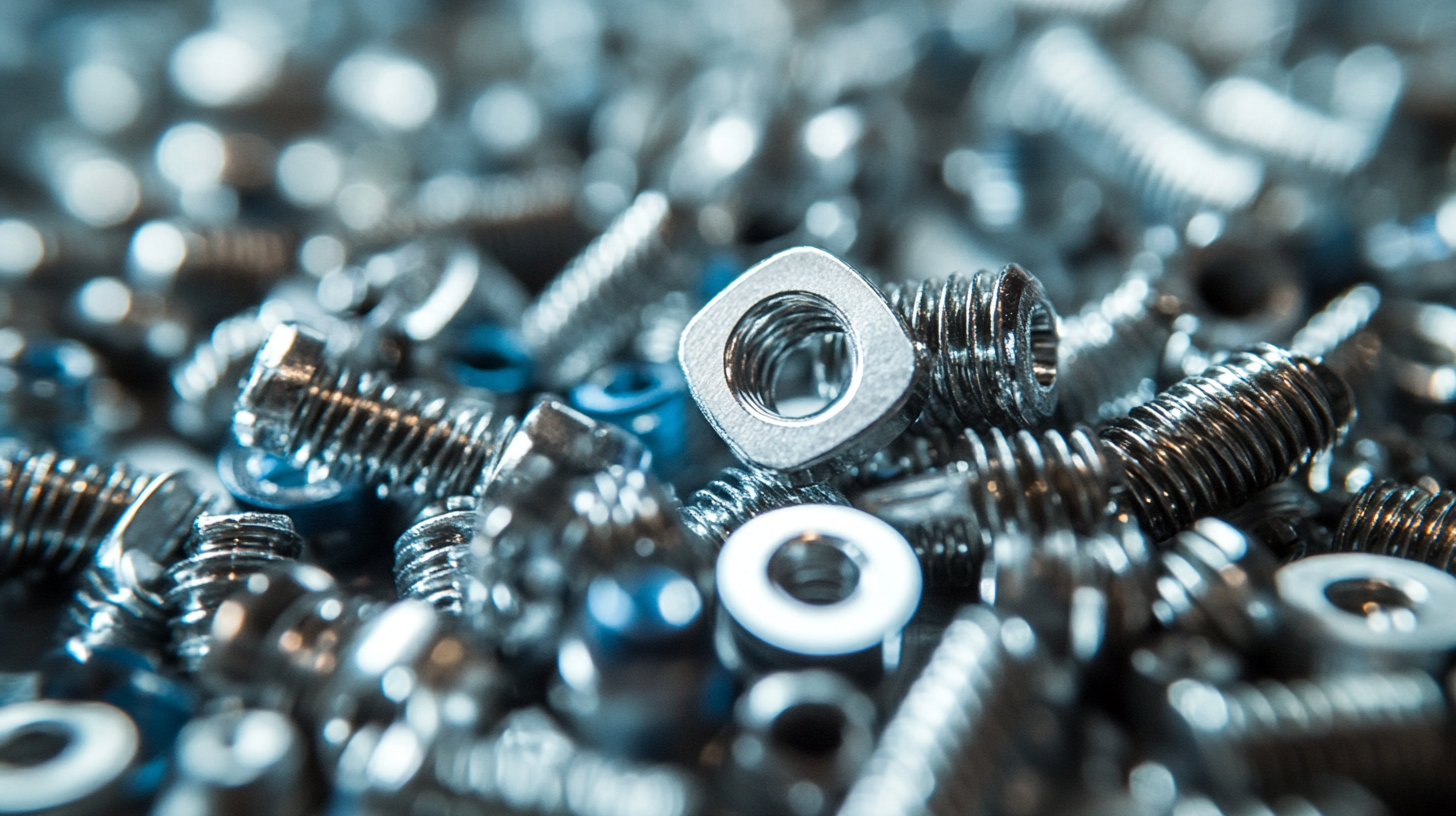


When it comes to selecting the right materials for your projects, choosing the best stainless steel fastenings can significantly impact the durability and performance of your assemblies. With countless options available in the market, navigating through the myriad of choices can be daunting. This guide aims to provide you with essential insights and expert tips to simplify your decision-making process.

In this blog, we'll explore the top reasons why stainless steel fastenings are an ideal choice for various applications, such as their corrosion resistance, mechanical strength, and aesthetic appeal. Whether you are a DIY enthusiast or a seasoned professional, understanding the key factors that influence the selection of stainless steel fastenings will empower you to make informed decisions, ensuring your projects stand the test of time.
So, let’s dive into this ultimate guide to discover how to choose the best fastenings for your specific needs.
When selecting stainless steel fastenings, understanding the key properties of the material is paramount. Stainless steel is renowned for its exceptional corrosion resistance, a critical factor in applications exposed to harsh environments. According to a report by the International Stainless Steel Forum, around 70% of stainless steel is utilized in applications where resistance to corrosion is essential. The alloying elements, primarily chromium, not only enhance durability but also contribute to the formation of a passive film that protects the underlying steel from oxidation.
Additionally, stainless steel fastenings offer outstanding tensile strength and mechanical properties. The American Iron and Steel Institute indicates that types 304 and 316 stainless steels exhibit tensile strengths ranging from 70,000 to 90,000 psi, making them suitable for a variety of high-stress applications. Moreover, the versatility of stainless steel in different grades allows manufacturers to choose the perfect balance between strength, cost, and corrosion resistance, catering to specific industry needs—be it construction, automotive, or food processing. Effective selection hinges on understanding these material properties and aligning them with the operational requirements of the project at hand.
When selecting stainless steel fastenings, understanding corrosion resistance is paramount. The American Society for Testing and Materials (ASTM) plays a crucial role by setting standards for corrosion-resistant materials. For instance, ASTM A276 specifies chemical composition and mechanical properties for stainless steel grades commonly used in fasteners, ensuring durability even in harsh environments. The standard grades, such as 304 and 316, are often highlighted for their unique resistance to corrosion, with 316 offering superior protection in marine environments due to its higher molybdenum content.

Tip 1: Always consider the environment where the fastenings will be installed. Use ASTM-compliant fasteners suitable for specific conditions, such as high humidity or exposure to chemicals. This decision can significantly enhance the longevity of the fastenings.
Furthermore, industry reports indicate that selecting the right grade of stainless steel can reduce maintenance costs by up to 30%. When fastenings are subjected to different stresses and corrosion instances, the choice of material directly impacts the overall reliability and safety of the assembly.
Tip 2: Invest in quality certifications and test reports to validate that the fastenings meet ASTM standards. This ensures your selection not only complies with industry expectations but also guarantees performance over time.
When selecting the best stainless steel fastenings for your applications, understanding torque and tension is crucial. Proper torque specification not only ensures the fastening's integrity but also prevents failure modes such as net-tension, shear-out, and bearing. Research indicates that experimental torque-preload curves for bolts, like the M10 × 1.25, reveal a distinct relationship between the tightening torque and the preload developed during installation. Using a torque-only control method can effectively help in maintaining consistent preload levels, which are vital for joint stability.
**Tip 1:** Always ensure the correct sequence and angles while tightening fasteners. Employing advanced technologies can assist in achieving the right torque values consistently during installation, reducing the risk of self-loosening under vibration.
**Tip 2:** When calculating the necessary torque specifications, consider the friction factors in threaded connections. A stiffness calculation model that includes these factors can improve the accuracy of your axial force distribution, enhancing the overall performance and reliability of your assemblies.
When selecting stainless steel fastenings, the choice of finish can significantly impact performance and longevity. Electroplating and passivation are two popular methods that provide protective coatings, but they serve different purposes and are suited to various applications. Electroplating involves depositing a layer of metal, such as nickel or chrome, onto the fastener's surface. This process enhances the aesthetic appeal, adds a layer of corrosion resistance, and can increase wear resistance. However, electroplated finishes may be less resistant to certain types of corrosion compared to passivated surfaces, especially in harsh environments.
On the other hand, passivation is a chemical treatment that enhances the natural oxide layer on stainless steel. This process does not add a coating but instead improves the material's resistance to corrosion and enhances its durability. Passivated fastenings are especially beneficial in applications where exposure to moisture, chemicals, or extreme environments is a concern. Hence, while electroplating can provide attractive finishes and additional protective layers, passivation offers superior corrosion resistance for stainless steel fastenings. Choosing between these finishes depends on the specific requirements of your project, including environmental conditions and mechanical demands.

In recent years, the stainless steel fastenings market has witnessed significant innovations driven by advancements in technology and changing industry demands. According to a recent report by Grand View Research, the global stainless steel fasteners market is projected to reach USD 22.9 billion by 2025, growing at a compounded annual growth rate (CAGR) of 6.7%. This growth is fueled by the increasing need for durable and corrosion-resistant materials across various applications, from construction to automotive industries.
One of the key trends emerging in the stainless steel fastenings sector is the rise of eco-friendly manufacturing processes. A study conducted by MarketsandMarkets indicates that manufacturers are increasingly adopting green technologies, reducing carbon footprints while improving efficiency. Notable innovations include the development of duplex stainless steels, which offer superior strength and resistance to pitting corrosion.
As industries strive to meet sustainability goals, the demand for fastenings that minimize environmental impact will only continue to grow, reshaping supply chains and manufacturing practices in the coming years.